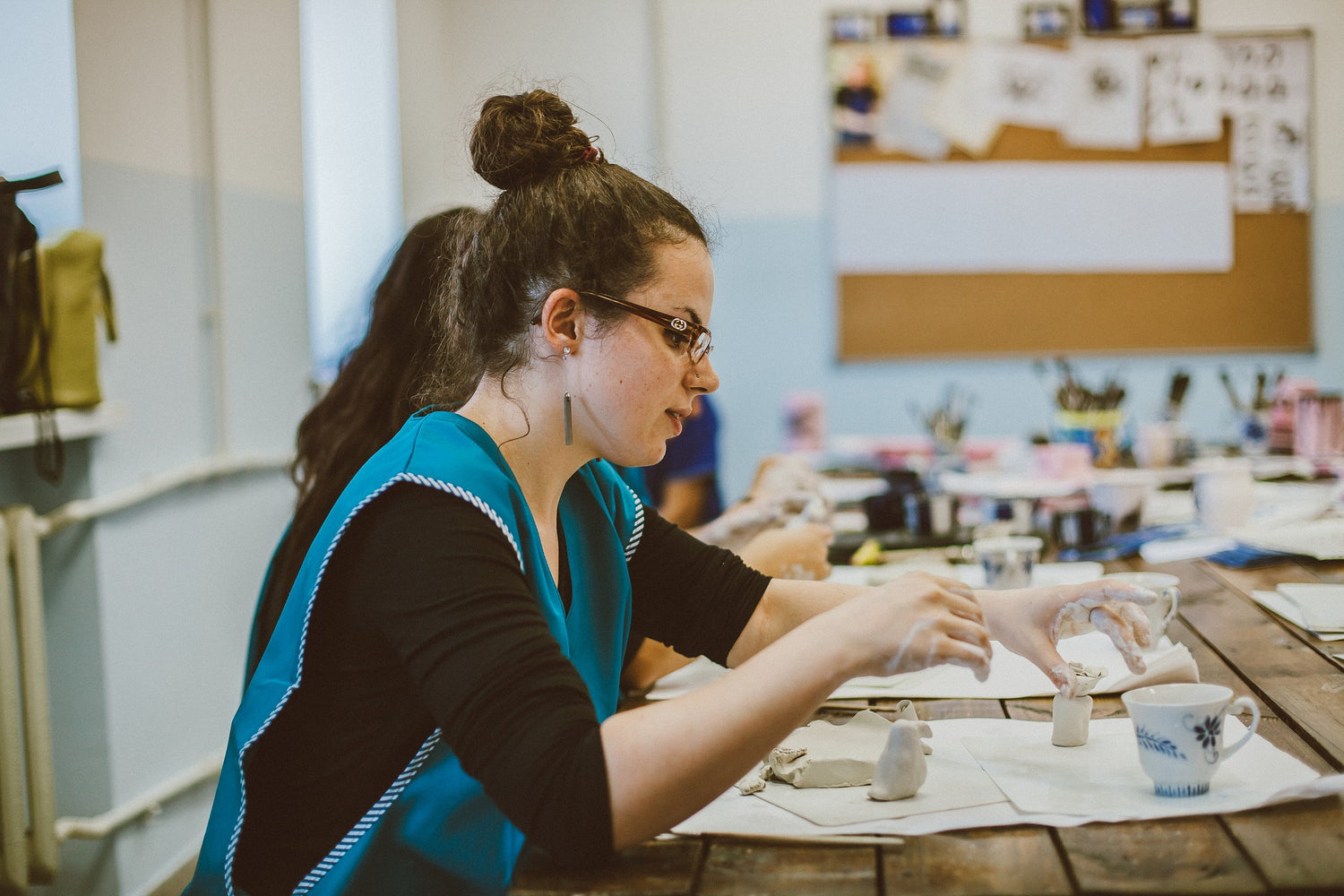Creative hobbies are booming. Young people knit, sew, draw, scrapbook, weave, embroider, etc. The 18 to 35 year olds have a growing interest in handmade! But how to interpret such a movement, such a swarming of ideas? The following article will attempt to shed light on this phenomenon which might seem at odds with societal reality.

DIY: three letters that generate millions of pins in Pinterest. A very small acronym to sum up a movement that continues to grow: the “Do It Yourself”, or, in French, the “do it yourself”. The manufacture of macramé and candles, jewelry, knitting, sewing, embroidery, weaving, and many others have come back in force lately. Whereas one or two decades ago we considered that these activities could only be practiced by our grandmothers, it is with fascination that we are witnessing a resurgence of these creative hobbies. What explains the rapid evolution of these disciplines? It is with humility and modesty that I will present to you my reflections on the interest that millennials develop in the know-how of our ancestors.

Origins
Although the DIY has taken this name very recently, its existence dates from well before the digital age. The origins of DIY are multiple and intersect to form the movement we know today. We first find the know-how of our ancestors whose subsistence depended only on them. Indeed, their primary needs were met by the work of their hands, with which they cooked, built, sewed. Contact with indigenous craftsmanship has undoubtedly played a role in the development of today's DIY, bringing new techniques and skills. This all materialized with the hippie movement, thanks to which many people began to take an interest in homemade products (Donfu, 2013: paras. 5-7). For millennials, access to the web has significantly changed the learning of these more or less ancestral techniques. Learning crafts is now accessible to everyone, whether through online courses, tutorials or the proliferation of Facebook groups created to share DIY tips. Art has been democratized and it is thanks to this process, among other things, that the phenomenon has taken on such magnitude (Eigenmann, 2018: para. 4).

Motives for creation
But why does such a current generate so many followers? It could all be due to the way of life advocated by society. Indeed, in this world that goes too fast, where overconsumption is king and where time for oneself is a rare commodity, many individuals are turning to handmade in the hope of finding themselves and slowing down. For some, creative leisure is an opportunity to overcome this inability to produce oneself and thus stand up to the industries of this world. It is out of a desire for independence and freedom that they choose to create on their own (Eigenmann, 2018: paras. 1, 3 and 9). For others, it is out of environmental concern that DIY has become part of their lives, to produce only the essentials, what they really need (Eigenmann, 2018: paras. 5-7). Added to this are financial considerations. Being both a producer and a consumer greatly reduces intermediaries and cost. In addition, the durability of the products is increased, which puts a brake on the wheel of overconsumption (Eigenmann, 2018: para. 2). Regardless of what motivates the new creators, all are bound by these common desires: to revolutionize the mode of consumption, to review the production of everyday items, to distance themselves from the rhythm of the current world and to resist the ideal of overconsumption advocated by the industry. Of the industry.

Meaning of the gesture
Producing everyday items yourself or making your own creations at home is, consciously or not, a cry from the heart and a small rebellion. It is a gesture, a civic action, with political, economic and social significance, which aims to change the model on which production is based. To refuse to buy an item made overseas and prefer to do it yourself is to oppose the inhuman conditions of this production and the destruction of our environment. Knitting on a Wednesday evening in your living room, mending torn pants or making a pair of earrings for a party is a small act of vindication.

In short, the DIY movement is more than a collection of modern hippies and granola hipsters. The DIY movement is a current of renewal, of introspection, of redefining its place in the cycle of industrial production. We have, as a community, an impact on the mode of consumption. One of those choices is the DIY movement; that is, to honor the work of the matriarchs and patriarchs of our families, to rekindle the flame of the hundreds of craftsmen who preceded us, to challenge mass production, to refuse to alienate man from the machine, to produce the world we desire ourselves.

Reviewed By Melanie
Bibliography
Donfu, E. (November 20, 2013). DIY: so many people recognize themselves in these three letters. The World . Retrieved from https://www.lemonde.fr/vous/article/2013/11/19/diy-tant-de-gens-se-reconnaissent-dans-ces-trois-lettres_3516152_3238.html
Eigenmann, J. (January 15, 2018). The Do it yourself movement or the great comeback of resourceful people. The Time . Spotted at https://www.letemps.ch/societe/mouvement-do-it-yourself-grand-retour-debrouillards





Leave a comment
This site is protected by hCaptcha and the hCaptcha Privacy Policy and Terms of Service apply.